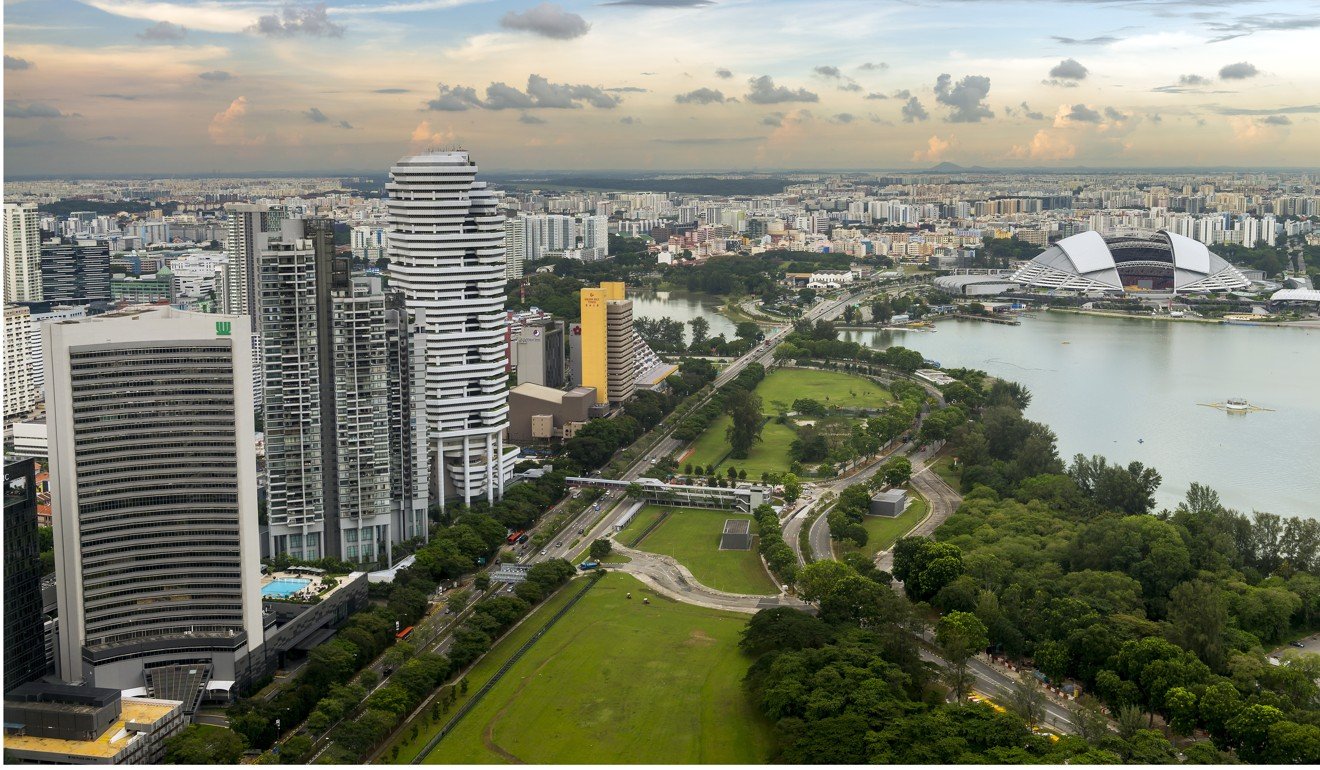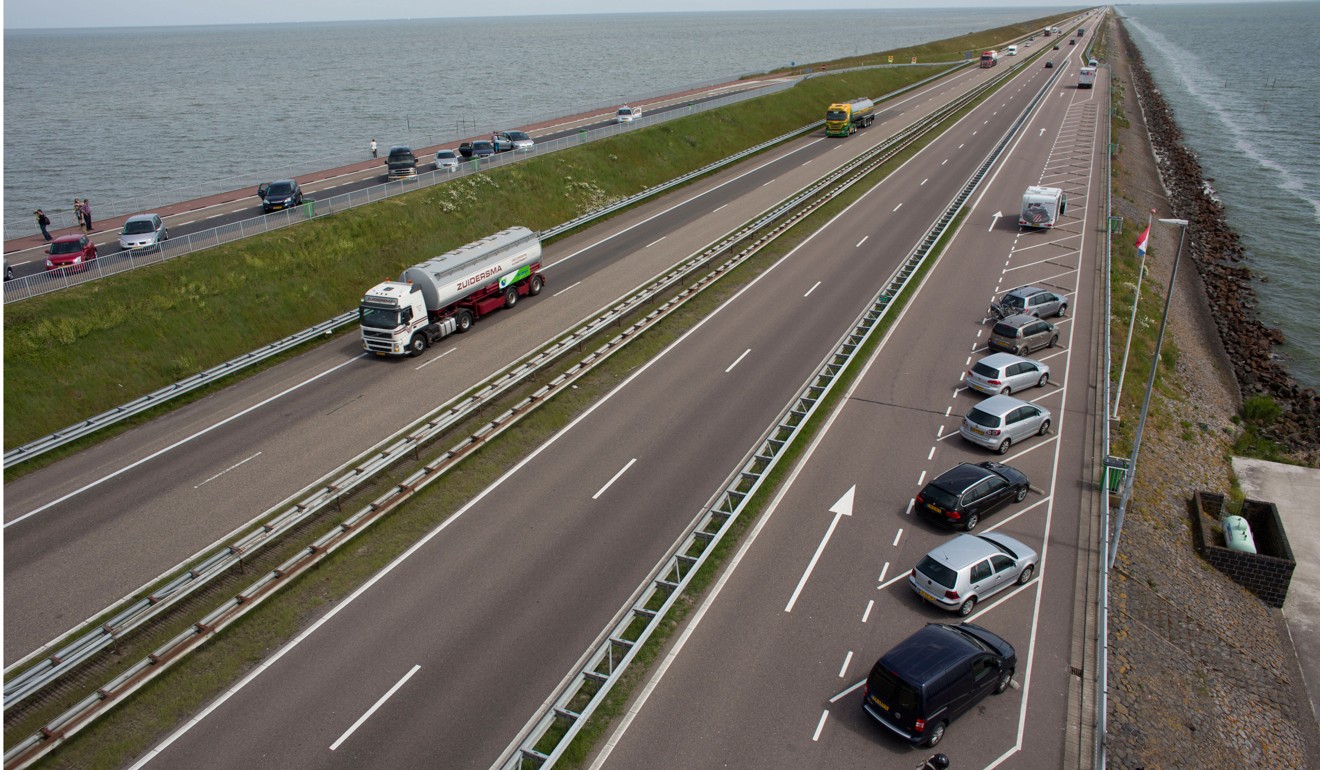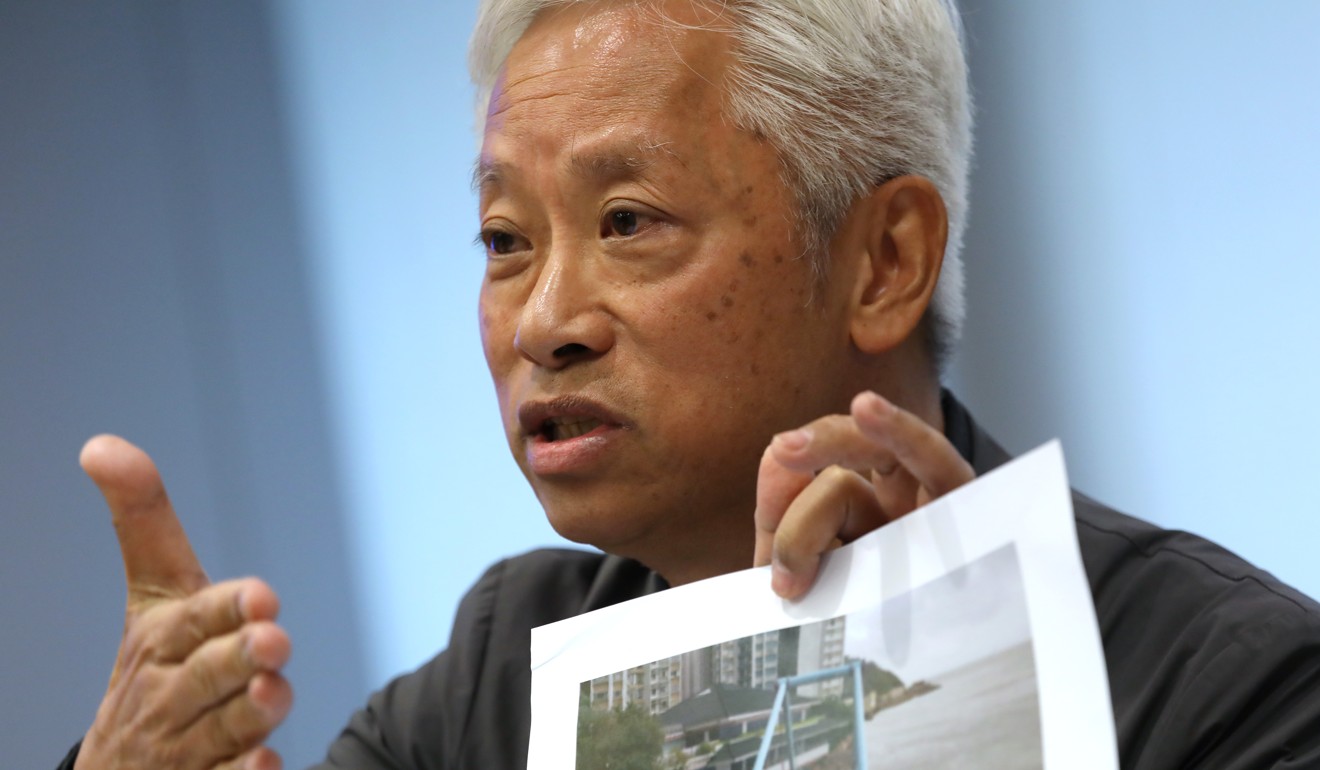
Why Singapore thinks dykes could be answer on reclamation – and how Hong Kong can benefit after severe shortage of sand
- National development minister Lawrence Wong says Singapore is looking at new ways of doing reclamation
- Reclamation work for Hong Kong’s third runway delayed for four months after sand supplies from mainland China dried up
Singapore is testing a method that can almost halve the use of sand in reclamation projects, the country’s development minister says, in a timely piece of information for Hong Kong, which is facing a severe shortage of the material.
The city state was experimenting with reclaiming low-lying land protected by dykes, which could cut sand consumption by 40 per cent, national development minister Lawrence Wong told an event in Hong Kong on Friday.
“Reclamation is a massive endeavour. It’s costly … and we have to do it carefully to minimise any environmental impact,” said Wong, who is also second minister for finance. “We are looking at new ways of doing reclamation.”

Wong said reclamation through building dykes – a method long used in the low-lying Netherlands to prevent floods and to create land – had been adopted for the first time on a project to reclaim 800 hectares to relocate Singapore’s military training bases to free up valuable land. The project is expected to be completed by 2022.
Reclamation explained: the good, bad and ugly methods of pushing back the sea
Reclamation had been a way to optimise land use, Wong said, through freeing up urban spaces by relocating facilities such as ports, golf courses and airports to the new areas.
Wilfred Lau Wai-tong, director of engineering firm Arup, told the event that Hong Kong could consider the method for future projects, particularly a plan to create 1,000 hectares to the east of Lantau Island, which would become a third economic centre.
The plan, dubbed Lantau Tomorrow Vision, was expected to cost at least HK$624 billion (US$80 billion) to build a housing and business hub.

But Raymond Chan Kin-sek, a former head of the government’s Geotechnical Engineering Office, said the method might not be suitable for a densely populated new town like the Lantau one, which was expected to house up to 700,000 people.
Chan said the method would create high sea walls, separating docks from the low-lying inland areas, creating a barrier for access to the sea.
“Unless you give up marine access, it will be a nuisance for residents to have to get off boats, climb up the dykes and come back down to town,” he said.

Wong also shared Singapore’s experience in planning green spaces, which accounted for 10 per cent of the country’s total area.
He said the country had been reserving land for green and recreational spaces, and creating trails that encircled Singapore and connected those green spaces.
“If you look at Singapore from the top down, you will be surprised that despite Singapore being such a highly urbanised city, we are in fact very green,” Wong said.

He said Singapore planned to increase the country’s green spaces by another 1,000 hectares in the next 10 to 15 years.
Open University of Hong Kong president Professor Wong Yuk-shan, meanwhile, said Hong Kong should look at cutting down some of its green spaces.
Digging a little deeper into massive Lantau reclamation project
Wong said 45 per cent of Hong Kong’s area was country parks, where development was not allowed, squeezing out housing, greening and recreational spaces in urban areas. He said the purpose of country parks was to protect areas of high ecological value, but not all sites fitted that description.
Developing country park peripheries was one of 18 options for increasing Hong Kong’s land supply that the public was consulted on last year. The government-appointed Task Force on Land Supply, which led the consultation, eventually did not recommend this option due to low public support.
The event was organised by the think tank Our Hong Kong Foundation.

